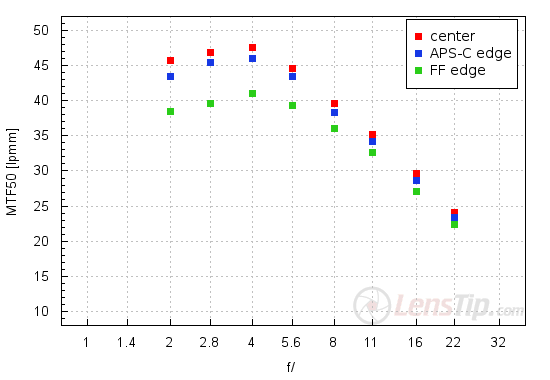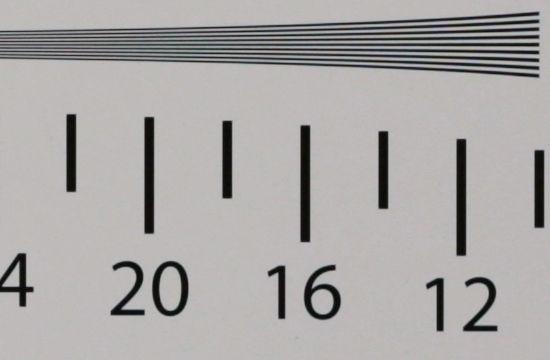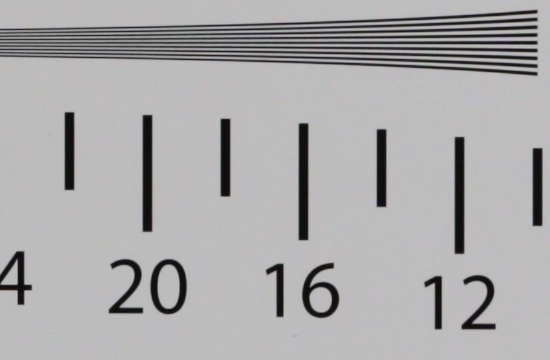Samyang 135 mm f/2.0 ED UMC
4. Image resolution
Let’s check how the tested lens compares here – its results in the frame centre, on the edge of the APS-C/DX sensor and on the edge of full frame presents a graph below.

Please Support UsIf you enjoy our reviews and articles, and you want us to continue our work please, support our website by donating through PayPal. The funds are going to be used for paying our editorial team, renting servers, and equipping our testing studio; only that way we will be able to continue providing you interesting content for free. |
- - - - - - - - - - - - - - - - - - - - - - - - - - - - - - - - - - - - - - - - - - - - - - - -
Only one word comes to your mind – a sensation! In the frame centre the image is very sharp already from the maximum relative aperture, with MTFs reaching almost 46 lpmm. It is more than the maximum result of the Canon EF 135 mm f/2L USM, so adored and praised by many people, which by f/4.0 exceeded slightly 43 lpmm! The Samyang, on stopping down reaches a record-breaking level of 47.6 lpmm.
Now a comparison between the Samyang and the expensive Zeiss Apo Sonnar T* 135 mm f/2.0, tested on the Nikon D3x and so praised by us, would be interesting. The Nikon’s sensor allows you to get MTFs about 1-2 lpmm higher than those from the detector of the EOS 5D MkIII. The maximum result of the Zeiss amounted to 48.9 lpmm so the result of the Samyang is, within the margin of error, almost the same as that of its competitor twice as expensive. It means in real life photos there will be virtually no difference!
The performance of the Samyang on the edge of the APS-C/DX is excellent as well. The MTFs are just 2-3 lpmm lower than in the frame centre, reaching a truly outstanding level, out of reach of many “primes” in the frame centre!
The edge of the full frame sensor lags behind the results you saw in the frame centre and the edge of the APS-C/DX ; not because it is bad but because those values were so outstanding. After all on the very edge of the full frame detector the lens reaches a very high level of 38.5 lpmm while wide open. Still here you can notice the advantage of the expensive Apo Sonnar which is better than the Samyang by about 3 lpmm.
To sum up the resolutions offered by the Samyang are brilliant, definitely worth a lens several times more expensive. A round of applause!
At the end of this chapter traditionally we show crops taken from photos of our resolution testing chart which were saved in JPEG format along with RAWs we used for the analysis above.
| Canon 5D Mk III, JPEG, f/2.0 |
 |
| Canon 5D Mk III, JPEG, f/4.0 |
 |






